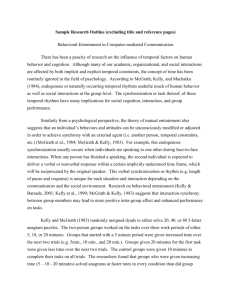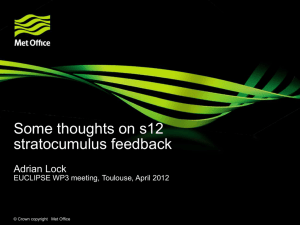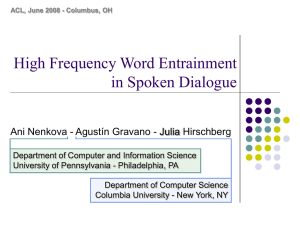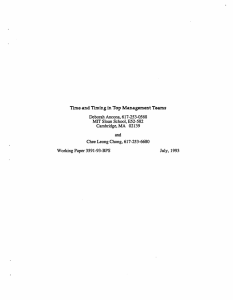grl28915-sup-0002-txts01
advertisement
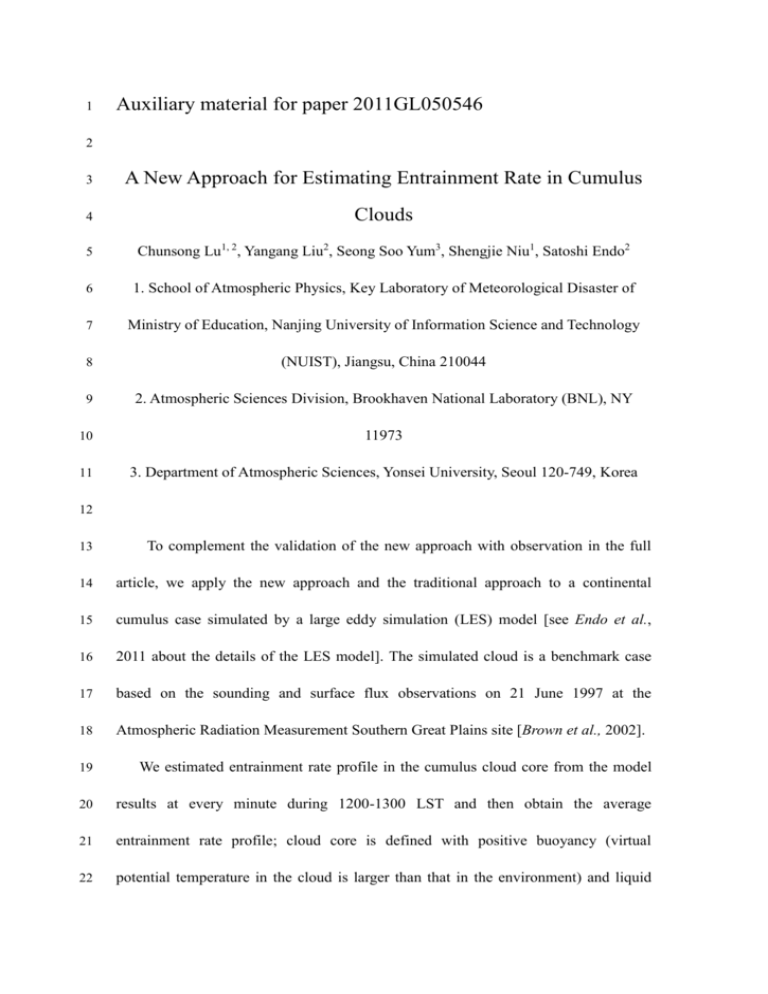
1 Auxiliary material for paper 2011GL050546 2 3 A New Approach for Estimating Entrainment Rate in Cumulus 4 Clouds 5 Chunsong Lu1, 2, Yangang Liu2, Seong Soo Yum3, Shengjie Niu1, Satoshi Endo2 6 1. School of Atmospheric Physics, Key Laboratory of Meteorological Disaster of 7 Ministry of Education, Nanjing University of Information Science and Technology 8 (NUIST), Jiangsu, China 210044 9 2. Atmospheric Sciences Division, Brookhaven National Laboratory (BNL), NY 10 11973 11 3. Department of Atmospheric Sciences, Yonsei University, Seoul 120-749, Korea 12 13 To complement the validation of the new approach with observation in the full 14 article, we apply the new approach and the traditional approach to a continental 15 cumulus case simulated by a large eddy simulation (LES) model [see Endo et al., 16 2011 about the details of the LES model]. The simulated cloud is a benchmark case 17 based on the sounding and surface flux observations on 21 June 1997 at the 18 Atmospheric Radiation Measurement Southern Great Plains site [Brown et al., 2002]. 19 We estimated entrainment rate profile in the cumulus cloud core from the model 20 results at every minute during 1200-1300 LST and then obtain the average 21 entrainment rate profile; cloud core is defined with positive buoyancy (virtual 22 potential temperature in the cloud is larger than that in the environment) and liquid 1 water mixing ratio > 0.01 g kg-1. The cloud base height is defined as the height of the 2 lowest cloud grid point; the temperature, water vapor mixing ratio profiles in the 3 cloud and the environment, and liquid water mixing ratio profile in the cloud can be 4 determined. The traditional approach is applied to two conserved properties, total 5 water mixing ratio (qt) and liquid water potential temperature (θl), separately. The 6 results obtained using the different approaches are compared in Figure S1. It is 7 interesting to note that the traditional approach with total water mixing ratio and 8 liquid water potential temperature as the two conserved variables produces 9 systematically different entrainment rates while the entrainment rates estimated from 10 the new approach lie between those estimated from the traditional approach. This 11 further gives us more confidence in our new approach. Neggers et al. [2003] reported 12 and discussed similar differences between the entrainment rates estimated using the 13 same traditional approach with total water mixing ratio and liquid water potential 14 temperature as the conserved variables. 1 2 3 Figure S1. the entrainment rates estimated from the traditional approach with 4 conserved properties: total water mixing ratio (qt) and liquid water potential 5 temperature (θl), respectively, and from the new approach. 6 7 References: 8 Brown, A. R., R. T. Cederwall, A. Chlond, P. G. Duynkerke, J. C. Golaz, M. 9 Khairoutdinov, D. C. Lewellen, A. P. Lock, M. K. MacVean, C. H. Moeng, R. A. J. 10 Endo, S., Y. Liu, W. Lin, and G. Liu (2011), Extension of WRF to cloud-resolving 11 simulations driven by large-scale and surface forcings, Monthly Weather Review, 12 (submitted). 13 Neggers, R. A. J., P. G. Duynkerke, and S. M. A. Rodts (2003), Shallow cumulus 14 convection: A validation of large-eddy simulation against aircraft and Landsat 1 2 3 observations, Q. J. Roy. Meteor. Soc., 129(593), 2671-2696, doi:10.1256/qj.02.93.








